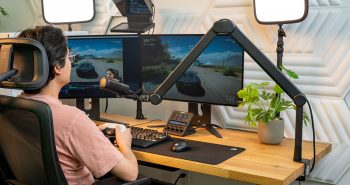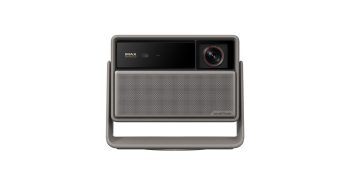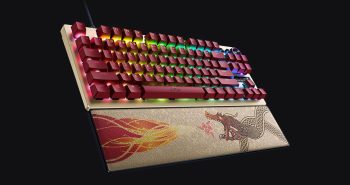I initially found out about Saitek’s new X-65F Combat Control System during their CES 2010 press release. While at the show, I made sure the GamingShogun crew swung by Mad Catz’ suite to get up-close and personal with it. Suffice it to say, even in our short time with the setup, we were very impressed.
In case you are a newbie to the world of flight simulation, and combat flight simulation in particular, the ultimate fighter jet peripheral is generally considered to be a HOTAS setup. H.O.T.A.S. is short for ‘Hands-On Throttle and Stick’, and strives to recreate the actual military control system where, during combat, pilots have all the controls they require on both the throttle quadrant or flight stick panel. Of course, if a pilot did not have such functionality, taking one’s hand off the stick or throttle to press a control could mean the difference between life and death. For us simmers, it may not be ‘real’ death, but at the very least blatant humiliation at the guns of our fellow sim jockeys.
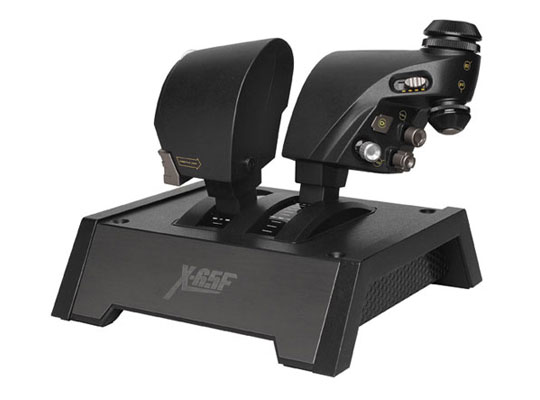
The X-65F holds to this HOTAS philosophy, featuring a record for home gaming peripherals of 608 possible command combinations without the user ever having to remove their hands from the controls. Furthermore, the X-65F pushes the limits of realism by adding perhaps the most revolutionary idea in flight sim peripherals ever: ‘force-sensing’ technology. What is ‘Force-Sensing’ technology? In short, this allows you to control your virtual aircraft without ever having to physically-move the flight stick. To expound on this, you are actually exerting force from your hand onto the flight stick but the stick is stationary. The base unit picks up the pressures being exerted and translates this into flight control signals.
This technology was first seen on the F-16 Fighting Falcon, where pilots initially complained that it was too ‘different’ than what they were used to and did not provide enough feedback as to the plane’s current orientation. In USAF ‘pits, they have since added some force-feedback technology to the stick in order to give a bit more info back to the pilots. The benefit to this technology is that in order to pull-off very complex maneuvers, the pilot never has to move his hand. Furthermore, on the X-65F, the rudder control is also sensed on the flight stick. This means that you can combine aileron, elevator, and rudder movements simultaneously in a very organic fashion with some slight pressure.
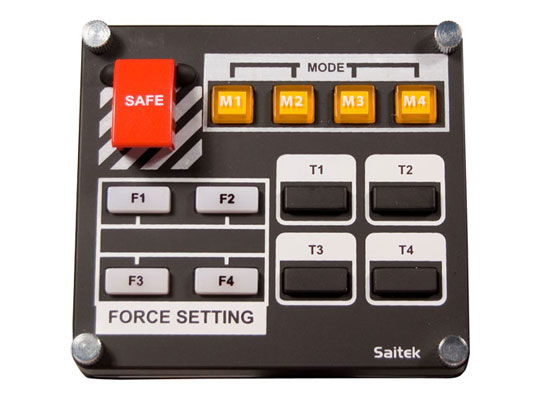
The throttle quadrant is a split-lever design, with the dual throttles able to be connected together to recreate single-engine aircraft or separated for twin-engine jobbers like the A-10 Thunderbolt II. While not based on any specific stick and throttle design from reality, Saitek has done a good job of creating something sexy enough to look likt it is pulled from a top-secret fighter in some upcoming Hollywood motion picture. There is a nacelle assembly which screws onto the throttle base, which allows two control panels to be placed in reach of the pilot’s fingers when using the throttle. The first control panel comes standard with the X-65F and features sensitivity settings for the force-sensitive flight stick, as well as a hooded pickle button and four additional, programmable controls. The control panel on the right is a placeholder out of the box, but can be replaced with one of Saitek’s Pro Flight Instrument Panel peripherals for even more realism. In case you missed our review of the Pro Flight Instrument Panel from Saitek, you can read it here.
Setting up the throttle and flight stick is fairly straight-forward. A plate is screwed into the bottom of the flight stick, making the bottom smooth and able to be attached to your desktop via included Velcro strips. The throttle assembly needs slightly more setup, with the user having to screw in the nacelles and the control panels. Thankfully, Saitek has included all the necessary tools (in this case, a small hex key) to complete the job. One issue with the setup is that the throttle is VERY tight to push about, even at its lowest intensity setting (which is adjusted on the bottom of the unit). It can be so tight to that you end up pushing around the entire throttle quadrant when powering up or down! One thing which would make this a lot better is if Saitek would have included a second plate and Velcro set for this peripheral. That way, at least it would lend more stability to your left pectoral workout.
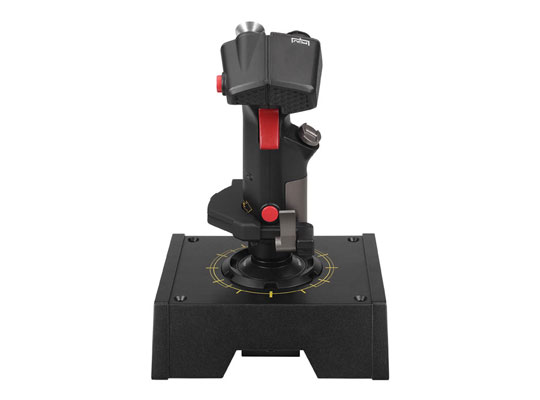
Thankfully, this can be averted altogether by utilizing the mounting holes Saitek has included on each of the system’s pieces. These holes allow you to screw the throttle and flight stick into your desk or home pit for the ultimate in stability! Crank on that sucker all you like – it’s going nowhere.
In my tests with Lock-On: Modern Air Combat (featuring the new Flaming Cliffs 2 expansion), I found the stick and throttle to be a gift from the gods of flight sim goodness. After meticulously setting up all my controls in the sim, including mapping the TDC slew controls to the throttle’s mini-mouse, I was all ready to go. The first time I started the ‘quick-start’ A10 mission in Lock-On, I crashed and burned VERY quickly after beginning. As it turned out, I had the sensitivity level at F4, which is its highest setting. I switched down to F1 until I got more used to it and now find myself running through all levels of sensitivity as the need arises. Basically, these sensitivity controls change the amount of control signal sent to the PC with the same amount of force exerted on the stick. Need to move into air combat maneuvers? Jettison that payload (I mapped this to the hooded pickle button) and switch over to F4 sensitivity to get the most out of your Warthog. After all, you will most likely only be armed with some Sidewinders and your cannon, so you will need all the maneuvering you can get!
Overall, Saitek’s new X-65F Combat Control System is the most realistic combat flight simulator peripheral available for the home market. Retailing for $399, there is no doubt that its price tag is very steep. Hopefully, sim jockeys will see past this and commit to one of the best purchases they can make for their home cockpit. If enough of us purchase the unit, then maybe they can bring the price down for the rest of the gaming market out there to enjoy as well. For a while, it looked like the flight simulation genre was in the outhouse, but with products like this new X-65F on the market as well as new sims coming out from guys like DCS, there is finally a light at the end of the tunnel, and it looks very nice indeed.

